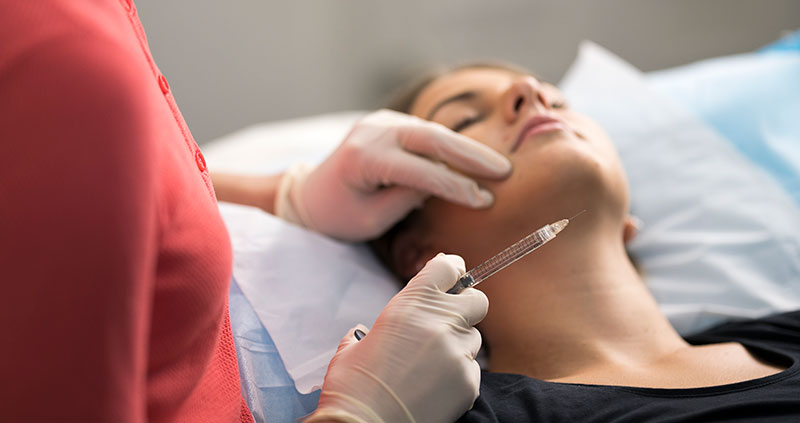Our skin specialists can help you achieve your desired look

Dermal fillers offer the ultimate treatment to restore and enhance the structure of the face. Our specialists have the highest level of training and expertise to offer dermal filler in a reliable, confidential environment. The combination of science and art knows no boundaries. For the discerning patients who want a freshen-up but want to maintain a natural element to their appearance, we assure you that your treatments will achieve the best possible result.
What are dermal fillers?
Dermal fillers are an effective treatment to replace or add volume to the face. Volumisation may be sought to enhance existing features (e.g. lip and cheek augmentation) or replace volume lost during the ageing process. Volumisation with dermal fillers is an effective anti-ageing treatment. Dermal fillers are often used for facial rejuvenation in combination with anti-wrinkle/muscle relaxant injections, and appropriate skin surface treatments, such as peels, laser and skin care.
Types of dermal filler
There are a number of different types and brands of dermal filler that have varying properties. They are generally divided into temporary and permanent subtypes.
Temporary Fillers
These days the most common type is made from hyaluronic acid, a complex sugar structure that is found naturally in the skin and other body tissues. Hyaluronic acid filler is a colourless, injectable gel, which holds water to hydrate the skin, add volume and cushions the skin where needed. Hyaluronic acid fillers are considered safest as allergic reactions are rare and the filler can be dissolved using further injections if required. Hyaluronic acid fillers generally last between 6 and 24 months depending on the site treated and specific product used.
Permanent Fillers
Types include liquid injectable silicone (LIS), polyacrylamide gels (PAAG), polymethylmethacrylate (PMMA) and polytetrafluoroethylene (PTFE). These are non-resorbable and remain in the tissues permanently.
What can be done with fillers?
Many issues can be addressed with dermal fillers, such as:
- Smoothing of facial wrinkles, or filling deep lines in the face
- Restoration of shape and volume to the face (cheeks, temples, jawline)
- Correction of hollowness/shadows under the eyes (tear troughs)
- Lip augmentation and smoothing of lines around the lips
- Lifting of depressed scars (eg acne scarring)
- Nose, brow, chin and forehead – shaping or enhancement
- Full face soft lift, also known as full face rejuvenation.
What is involved in dermal filler procedures?
You will first meet with one of our specialist dermatologists/injectors for a consultation and facial assessment. During this, you will discuss appropriate treatment options, expected outcomes and risks, specific to your objectives.
If both you and the specialist are happy to proceed, treatment with dermal filler can be performed on the day.
Dermal filler is delivered via small injections, it’s a minor procedure and usually very well tolerated. Many filler products contain local anaesthetic, which relieves discomfort during the procedure. Other pain relief such as topical anaesthetic cream, nerve blocks and ice can be used if necessary. Pain and discomfort, however, varies between the treatment site and patient.
The results are immediate, although it does take between 2-4 weeks to settle.
What are the potential side effects and complications of dermal fillers?
Minor side-effects: You may experience redness, swelling, tenderness, small bruises and/or lumps at/around the injection sites. Less commonly extensive bruising and swelling may occur.
The more serious complications are very rare and will be discussed, in detail with you during your consultation. These can include infection, abscess, blocking of the blood vessel (causing damage to surrounding tissue or permanent visual loss), skin pigmentation change, nodules, asymmetry and under or over-correction.
Are there any reasons not to treat with dermal fillers?
Contraindications to dermal filler include the following:
- Pregnancy or breastfeeding
- Previous allergy or adverse reaction to the product or local anaesthetic agent
- Unrealistic expectations
- Active infection at injection site.